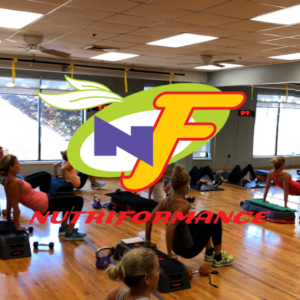Thanks to the internet and social media, I’ve come across a lot of self-proclaimed fitness experts giving out false or outdated information, and/or always drinking the kool-aid of the newest fad. Unfortunately, degrees or certifications are not required in the health fitness field – there are no federal regulations to help keep consumers safe. If you are considering working with a trainer, below are some tips to help you with your fitness journey.
- First and foremost, check a trainer’s credentials. You’ll want a trainer with at least a bachelor’s degree. Having a degree (i.e. Exercise Science, Exercise Physiology, Kinesiology, Athletic Training) helps a professional decipher what’s legitimate information vs. non-evidence “fake” news. If there is a trainer with a very good “word-of-mouth” reputation and doesn’t have a degree, see how long they have been a trainer as experience is a very good teacher. Secondly, check to see if they are certified. You can go online to any trainer’s certification organization and see if their certification is up-to-date. Some of the top tier NCCA-approved certification organizations include American Council on Exercise (ACE), National Academy of Sports Medicine (NASM), and National Strength and Conditioning Association (NSCA). For more information on top-teir certifications check out http://www.ideafit.com/certifications/personal-trainer. A trainer that is certified must maintain their certification through some form of continuing education. Most institutions require a renewal every 3 years. This helps keep a trainer informed with current research, programming updates, and techniques. Even though I’ve been in the game for over 20 years, I am still learning things!
- Client testimonials – does a trainer (or gym) have any posted on their website/social media? This allows you to see what kind of clients they work with (age, goals, abilities, etc). Trainers posting videos of their own workouts and post-workout selfies may motivate you, but how are the actual training sessions with their clients – are they attentive and engaging as their Instagram implies? Are they able to modify exercises to accommodate your fitness level, or are they going to crush your joints that haven’t moved much in several months/years?!
- If you currently belong to a gym, shop around. Observe the different trainers on the floor. You’ll start to notice the busy ones. There might be a reason why they are busy. Look at how they train their clients. Are they doing the same program for every client? Not necessarily a bad thing as they have found it delivers results. However some programs aren’t for everyone. Are they attentive, or do they look bored out of their minds? The latter may indicate they won’t be in the industry much longer. If they are constantly talking about themselves during the workout, red flag as they may not be keeping you in mind before, during, or after the workout.
- There should be some form of an assessment to establish a baseline. A really good assessment is a Functional Movement Screen. I use the FMS to determine if there are any muscle imbalances, mobility and flexibility issues, and core strength deficiencies. The FMS helps a trainer determine what exercises are appropriate vs. not, and what needs to be added in to fix a faulty movement pattern. Basic fitness measurements and body composition analysis are good too as it will help a trainer choose the appropriate style of training or exercise selection.
- If you have been sedentary for over a year and haven’t had a physical examination by your physician in over 3 years, its always a good idea to get one before participating in a vigorous exercise routine. If you are a male over 45 or female over 55 and you haven’t worked out in a while, get cleared by your physician.
Good luck with your fitness journey! Remember it took you weeks, months, even years to get “out of shape.” So be patient with the process and trust in your personal trainer.
Randy Leopando
Director of Personal Training
randyl@nutriformance.com




